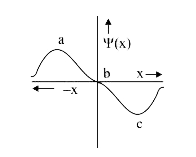Person who take drugs intravenously are much more likely to acquire serious infections like
AIDS
Hepatitis-B
Cancer
Both (1) and (2)
The correct Answer is:D
Step-by-Step Solution:
1. Understanding the Question: The question asks about serious infections that individuals who take drugs intravenously are more likely to acquire.
2. Identifying Relevant Infections: The two primary infections mentioned in the context of intravenous drug use are AIDS and Hepatitis B.
3. Explaining AIDS: AIDS, or Acquired Immunodeficiency Syndrome, is caused by the Human Immunodeficiency Virus (HIV). It primarily affects the immune system, making the body more susceptible to infections.
4. Explaining Hepatitis B: Hepatitis B is caused by the Hepatitis B virus (HBV) and primarily affects the liver, leading to serious liver complications.
5. Common Mode of Transmission: Both AIDS and Hepatitis B share similar modes of transmission, which include:
- Sexual contact
- Blood transfusion
- Sharing of infected syringes
- From mother to baby during childbirth
6. Conclusion: Since both AIDS and Hepatitis B are serious infections that can be transmitted through shared needles, individuals who take drugs intravenously are at a higher risk for both infections. Cancer, on the other hand, is not an infectious disease, so it does not apply in this context.
7. Final Answer: The correct answer is that individuals who take drugs intravenously are much more likely to acquire serious infections like both AIDS and Hepatitis B.
- Sexual contact
- Blood transfusion
- Sharing of infected syringes
- From mother to baby during childbirth
Topper's Solved these Questions
- HUMAN HEALTH AND DISEASEBOOK - VMC MODULES ENGLISHCHAPTER - HUMAN HEALTH AND DISEASEEXERCISE - EFFICIENT
50 Videos
- HUMAN HEALTH AND DISEASEBOOK - VMC MODULES ENGLISHCHAPTER - HUMAN HEALTH AND DISEASEEXERCISE - IMPECCABLE
54 Videos
- HUMAN HEALTH AND DISEASEBOOK - VMC MODULES ENGLISHCHAPTER - HUMAN HEALTH AND DISEASEEXERCISE - IMPECCABLE
54 Videos
- HUMAN HEALTH & DISEASE BOOK - VMC MODULES ENGLISHCHAPTER - HUMAN HEALTH & DISEASE EXERCISE - IN-CHAPTER EXERCISE-E
10 Videos
- HUMAN REPRODUCTION BOOK - VMC MODULES ENGLISHCHAPTER - HUMAN REPRODUCTION EXERCISE - IN-CHAPTER EXERCISE-C
10 Videos
Similar Questions
Knowledge Check
Persons who take drugs intravenously are much more likely to acquire serious infections like
AcancerBAIDS and cancerCmalariaDtyphoid.Streamline flow is more likely for liquid with
A1. high density and high viscosityB2. low density and low viscosityC3. high density and low viscosityD4. low density and high viscosity
Streamline flow is more likely for liquid with
View SolutionList the symptoms of Ascariasis. How does a healthy person acquire this infection ?
View SolutionList the symptoms of ascariasis. How does a healthy person acquire this infection?
View SolutionA man takes large amount of protein. He is likely to excrete more amount of
View SolutionWhen a car takes a sudden turn it is likely to fall.
View SolutionThe breakdown in a reverse biased p-n junction diode is more likely to occur due to
View Solution

